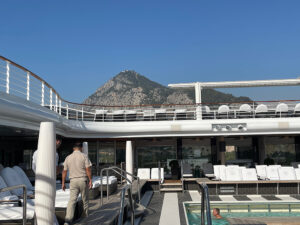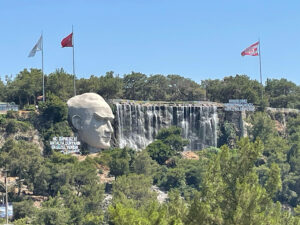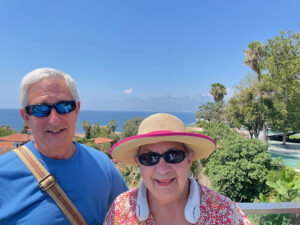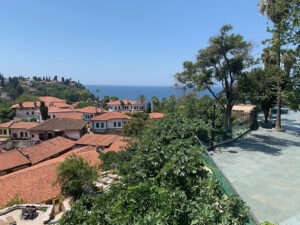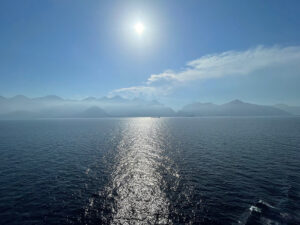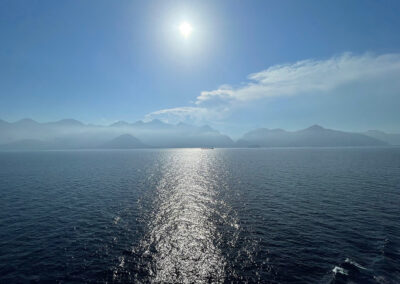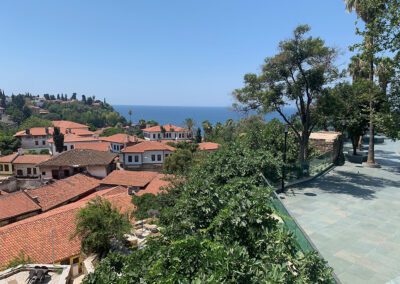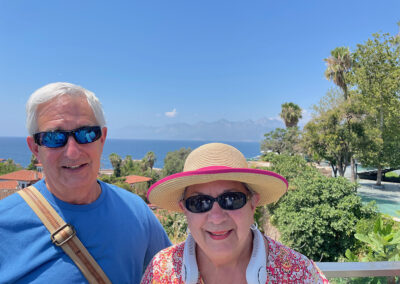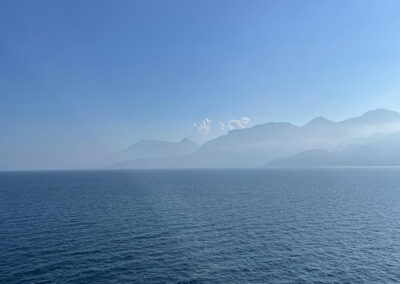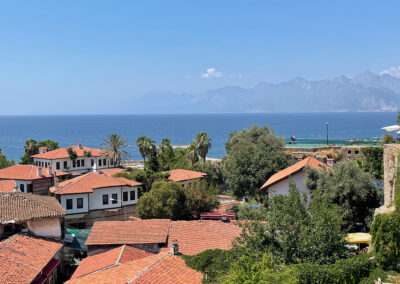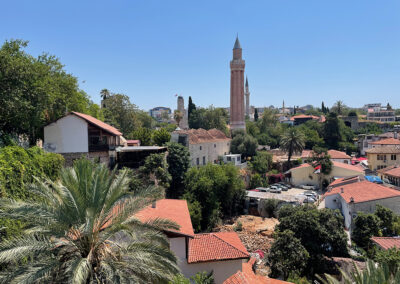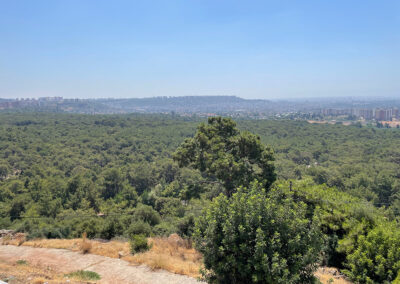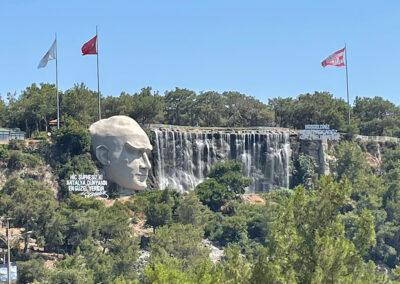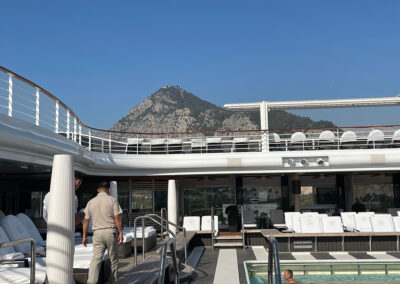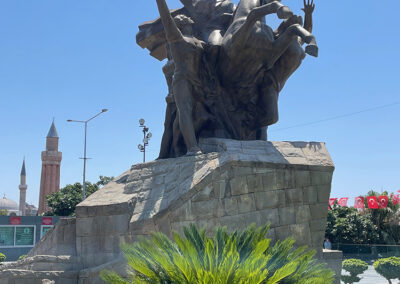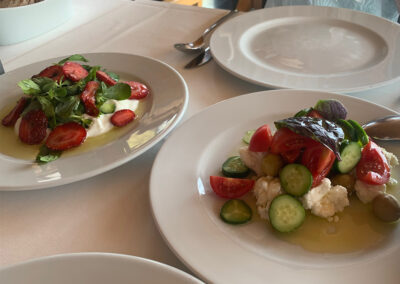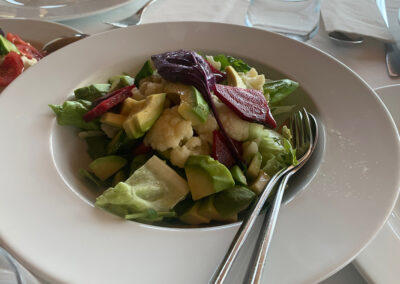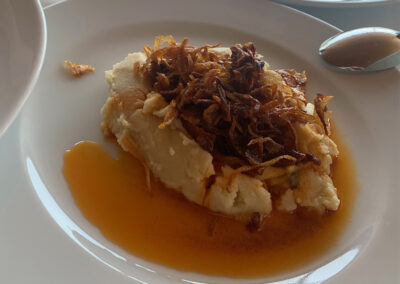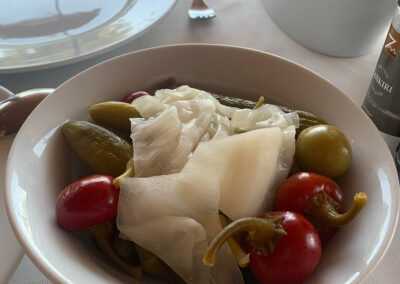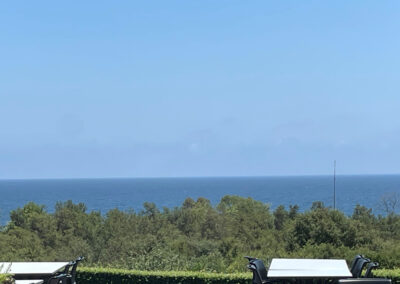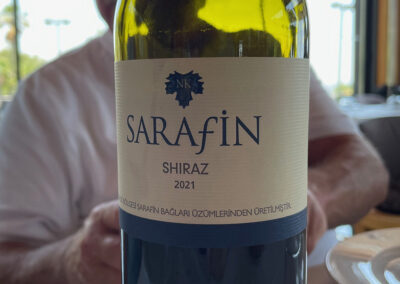Turkey and Greek Islands
Cruising the Aegean
Getting There
Lesbos | Mykonos | Kuşadasi and Ephesus | Patmos | Rhodes | Cyprus | Antalya | Bodrum | Crete
Getting Home
Antalya
Antalya is one of the places we visited on this cruise that I had never heard of before we signed up. I realize that’s a comment on my lack of geographical savvy, but it is what it is. Antalya is actually a fascinating place with a long history–a city of three million people on the southern coast of Turkey. Three years ago the population was half that, the increase largely coming from both Ukrainian and Russian refugees. Go figure.
Geographically it struck me as one of the most unusual places I’ve ever seen. Along most of this coastline, at least all of what we saw in this area other than Antalya, mountains ran down into the sea without any flat land to form a beach or arable land at all. I think I would have drawn something like this when I was seven, if you told me there were mountains on the sea. (Yes, I know there are other places I’ve been where this is true, but just wait.) Judy and I were both on a bus tour of the city, and our guide explained that for most of the coast in this area there were no rivers, so no silt had built up over the thousands of years after the mountains were formed. No river, no run-off, no silt build up, no flat land, no habitations, no city possible. (Sounds like a begat chapter in a religious text if you put it in a different way, doesn’t it? “Rivers begat silt runoff, that begat … “) But there is a river that empties into the gulf of Antalya, so by the second century BC the settlement first established by the Hittites was a Greek city, soon taken over by the Romans, and the usual progression of ownership in the Eastern Mediterranean followed along as though pre-ordained.
If you’ve ever before read anything I’ve written here, you’ll recognize that I learned this on the cruise and was fascinated by the history. I get excited when I learn new things and just have to pass it on. You could have skipped that paragraph, but it’s too late now.
Voila! Antalya is today a thriving city that is a tourist destination in this part of Turkey. Sort of a crescent of beachfront along a bay, with a plateau above that where the modern city perches, and gradually rising land up into the edge of the mountains where the city borders are. Outside this crescent the mountains go directly into the sea, and you can see that in the title banner at the top of this page. Here’s the photograph I made as the ship docked near the western edge of the crescent. It looked to me like we were docking slap up against the side of a mountain, but there was really a little flat spot there.
Back to the business at hand.
As fascinated as I was by the geography and the history of the place, I expected to have the chance to go to a market, having misread the description of the excursion. As it turned out we had a bus ride through the city from the dock all the way to the northern entry to Antalya, up in the foothills, and back down by another way. I enjoyed the chance to leave the bus in the northern reaches, with a good view of the city below to the south and a stunning view of the Ataturk monument and waterfalls to the north. In spite of the haze, the size of this place was clear. We all noticed that along the way, and from what we saw below us, there were no really tall buildings. In a city of this size that seemed strange, until our guide pointed out that we were in an earthquake zone. (There are some newer buildings built to earthquake safety specifications, but not in the [art of the city we were in.)
We left the northern section and took a different route to reach Republic Square in the new city. This was on the upper plateau, overlooking the old city. There was another monument to Ataturk in the center, but our interest was drawn to the view overlooking the Old City. A kind fellow passenger took our photograph with the sea in the background, probably one of the best images of us we have from this trip. The only disappointment was not getting to go down there and check the Old City out. I bet there was a market there.
The excursion ended with lunch, never a bad thing. We went to a really nice restaurant above the coast, but in a sort of park area. No apartment buildings, no pharmacies, no quick marts. The table was set with good-sized plates of five different appetizers (mezes) for every four people–enough food for a full meal for some of us. The wine was a Syrah from a Turkish vineyard, very good, and a label that we actually have available in the US, Judy got good photos of the food; they’re posted below. The main course was about a full cup of rice with raisins and nuts topped by about twelve ounces of thinly sliced grilled meat. I’m sorry we didn’t get a photograph, because there was one of these huge plates for each of us. A huge meal. The dessert was a dish that I would describe as candied pumpkin with whipped cream and crushed walnuts, accompanied by glasses of strong tea or cups of Turkish coffee. (The dessert photo was taken after I was well into demolishing it.)
To be truthful, I’d enjoy a repeat of that meal just about any time.
We sailed away from Antalya while we were in the observation lounge for trivia. What a sight! We sailed through the gulf with the sun above the mountains, the reflections on the water and in the haze of humidity making everything glow just a little more than you would think possible. We’ll remember Antalya for quite a while, the place we’d never heard of before.
Photos of Antalya
Lunch!
Getting There
Lesbos | Mykonos | Kuşadasi and Ephesus | Patmos | Rhodes | Cyprus | Antalya | Bodrum | Crete
Getting Home

